The pet-care world has grown by leaps and bounds over the past few years — and there’s no sign of slowing down. According to the American Pet Products Association, U.S. pet industry spending reached a whopping $152 billion in 2024 and is expected to hit $157 billion by the end of 2025.
But as 2025 begins to wind down and we look toward 2026, it’s not just about bigger numbers, it’s about smarter growth, evolving technology, and a new level of care for our furry friends. Let’s take a look at what’s coming next for the pet-care industry, and how you can get ready.

1. Pet Spending Stays Strong (But Smarter)
Pet parents will always prioritize their animals’ well-being, but they’re also becoming more thoughtful about where their money goes, particularly with global economic challenges impact many families. Premium products, wellness services, and health-focused offerings will continue to shine, while purely “for fun” spending might cool off a bit.
Estimations show that the average household could spend around $1,445 per pet by 2026.
What this means for you: Offer flexible options. Think tiered service packages, wellness memberships, or customizable service plans that make great care accessible to every pet parent.
2. Virtual Vet Visits Are Here to Stay
Telehealth isn’t just for humans anymore! Remote vet consults, online behavior coaching, and smart health tools for pets are quickly becoming part of everyday care.
-
Telehealth for animals is growing steadily at about 6.5% per year.
-
The AVMA reports that digital tools are helping vets expand access and convenience for pet owners without replacing in-person visits.
-
Researchers are even creating AI-powered feeders and health monitors that adjust feeding and care based on a pet’s real-time data.
Tip: If you run a boarding, grooming, or training business, consider partnering with a local vet who offers virtual care — or take a cue by offering virtual follow-ups wellness check-in to your offerings. Keep embracing digital tools that streamline your workflow while still maintaining the human touch that makes your pet-care business succeed.

3. The Vet Shortage Debate Continues
We’ve all heard the headlines about a “veterinary shortage,” but the truth is more nuanced. Some experts predict a shortfall of around 17,000 vets by 2032, while others say supply and demand are actually balancing out.
Still, the industry agrees: Rural communities and large-animal vets remain in short supply.
Tip for all pet business owners: Support your team’s mental health, offer professional development opportunities, and look for ways to empower your staff to take on greater responsibility that fulfills them. Retention is key in the years to come, and finding tools that ease your team's workload so they can focus their attention on caring for furry friends can be a major assist.
4. Big Players, Bigger Mergers
The pet-care world is seeing more consolidation and private equity investment than ever. Larger corporations and franchise groups are scooping up independent clinics, grooming salons, and daycare centers to create full-service platforms.
While this can bring new efficiencies and tech resources, it can also make it harder for smaller businesses to stand out.
Your advantage: You know your community. Focus on personalized service, genuine relationships, and a local touch that big chains can’t replicate.

5. AI and Data Are Changing How We Care for Pets
Artificial intelligence and smart devices are helping us understand pets like never before. Imagine wearables that predict health issues, AI that flags early signs of illness from photos, or feeding systems that learn your pet’s ideal schedule. These technologies are no longer sci-fi — they’re happening now.
Academic researchers are adapting AI diagnostic tools originally built for human medicine to work in veterinary imaging and health prediction.
Tip: Start thinking about data — even simple tracking like visit frequency, diet preferences, or behavioral notes can help personalize your services and improve outcomes.
6. Sustainability and “One Health” Take Center Stage
Consumers care deeply about how their choices affect the planet — and their pets. From eco-friendly shampoos to ethically sourced food, sustainability is a top priority for many pet parents.
The "One Health" movement, which connects human, animal, and environmental wellness, is shaping how organizations and governments view animal care and disease prevention.
Tip: Review your products and partners. Highlight your sustainability efforts in marketing, whether that’s supplying dog treats made with clean, local ingredients or up cycling old fabrics to make dog toys or bandanas.

The Future Is Bright (and Busy!)
As we head into 2026, success will come to pet-care providers who embrace innovation while keeping their practices personal and compassionate.
Here’s how to stay ahead:
- Focus on long-term client relationships, not just one-time visits.
- Use technology to enhance (not replace) human touch.
- Keep learning and adapting; trends change fast!
- Lead with transparency and empathy (pet parents notice!).
With the right mix of heart and innovation, 2026 could be your best year yet in pet care. Get pet-care business software that can automate admin so you can focus on excellent care. Try Revelation Pets free for 14 days!






